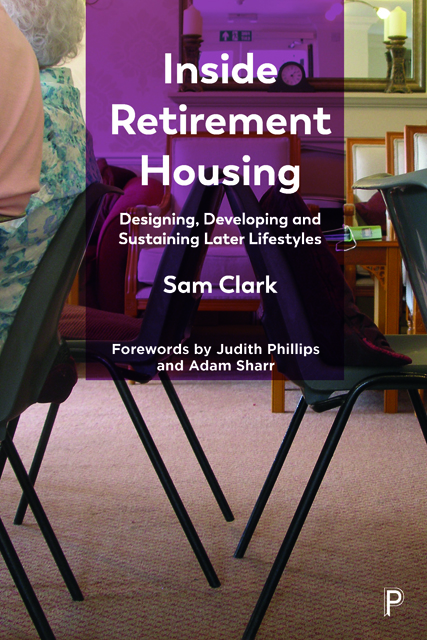15 - Global outlook
Published online by Cambridge University Press: 20 June 2023
Summary
Step change
In the UK there has been a tangible step change over the past decade in terms of heightened awareness of the housing needs of older people as well as material change within the construction industry, including increased range and quality of age-friendly housing. Park and Porteus (2018) assert that ‘homegrown’ examples are at least as good as the HAPPI case studies located within Continental Europe in 2009, suggesting that ‘if today’s best practice became tomorrow’s normal, and the rate of delivery increased significantly, we would be much better equipped to deal with the future’. Readers will recall the Introduction of this book traced specific tipping points and incremental change witnessed within the UK architectural industry, but also a commentary, within Part III, on how the profession under-values and under-rewards engagement in the housing sector more broadly. Without doubt there are increasing numbers of architects engaged in the development of age-friendly housing, yet the housing sector remains a less attractive place for architects to realise a critically acclaimed career. Popular notoriety, professional prestige, personal wealth and so on are more readily associated with ‘starchitects’ (Klimek, 2019) working in other sectors on different building typologies – typically high-profile public buildings with distinctive formal/aesthetic attributes that take on an iconic status.
Apart from housing, the business of designing individual, bespoke homes has been a mainstay of architectural practice since its origins. Commentators have observed that ‘the private house occupies a unique position in both the history of architecture and human imagination. Beyond its core function of shelter, it is an object of fantasy, a source of delight, a talisman and a testing ground’ (Architectural Review [AR], 2021). But architects also have an important contribution to make towards the design of high-quality volume housing, and there are some green shoots with respect to changing values and external recognition. For instance, in 2019, the Royal Institute of British Architects (RIBA) Sterling Prize was for the first time awarded to architects of a social housing project, Goldsmith Street in Norwich, England, designed by Mikhail Riches with Cathy Hawley. The first general-needs housing project to receive the Sterling Prize (2008) was Accordia in Cambridge, England, designed by Feilden Clegg Bradley Studios, Alison Brooks Architects and Maccreanor Lavington Architects.
- Type
- Chapter
- Information
- Inside Retirement HousingDesigning, Developing and Sustaining Later Lifestyles, pp. 254 - 262Publisher: Bristol University PressPrint publication year: 2022

